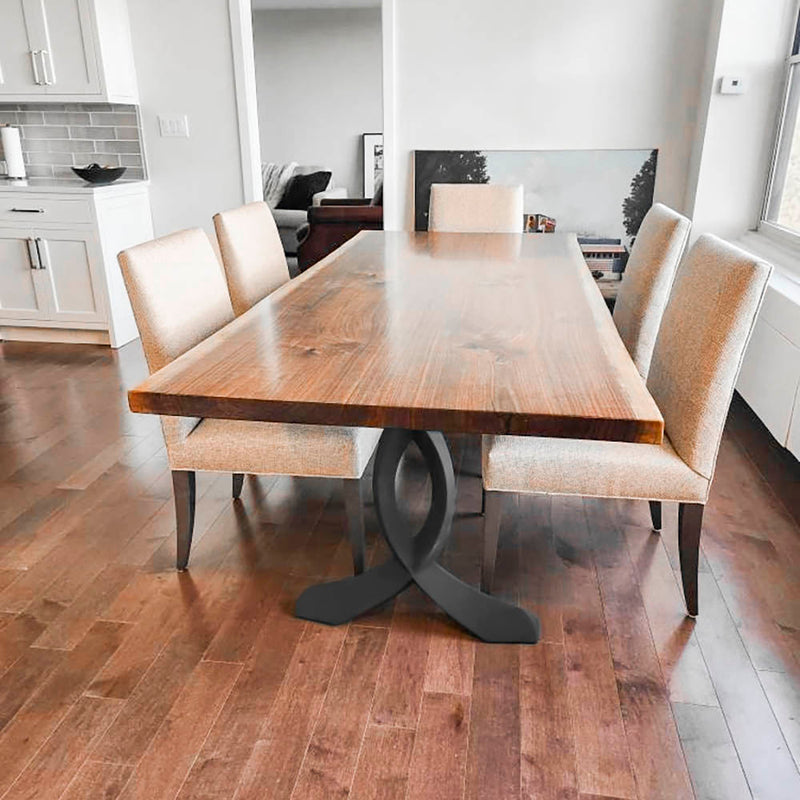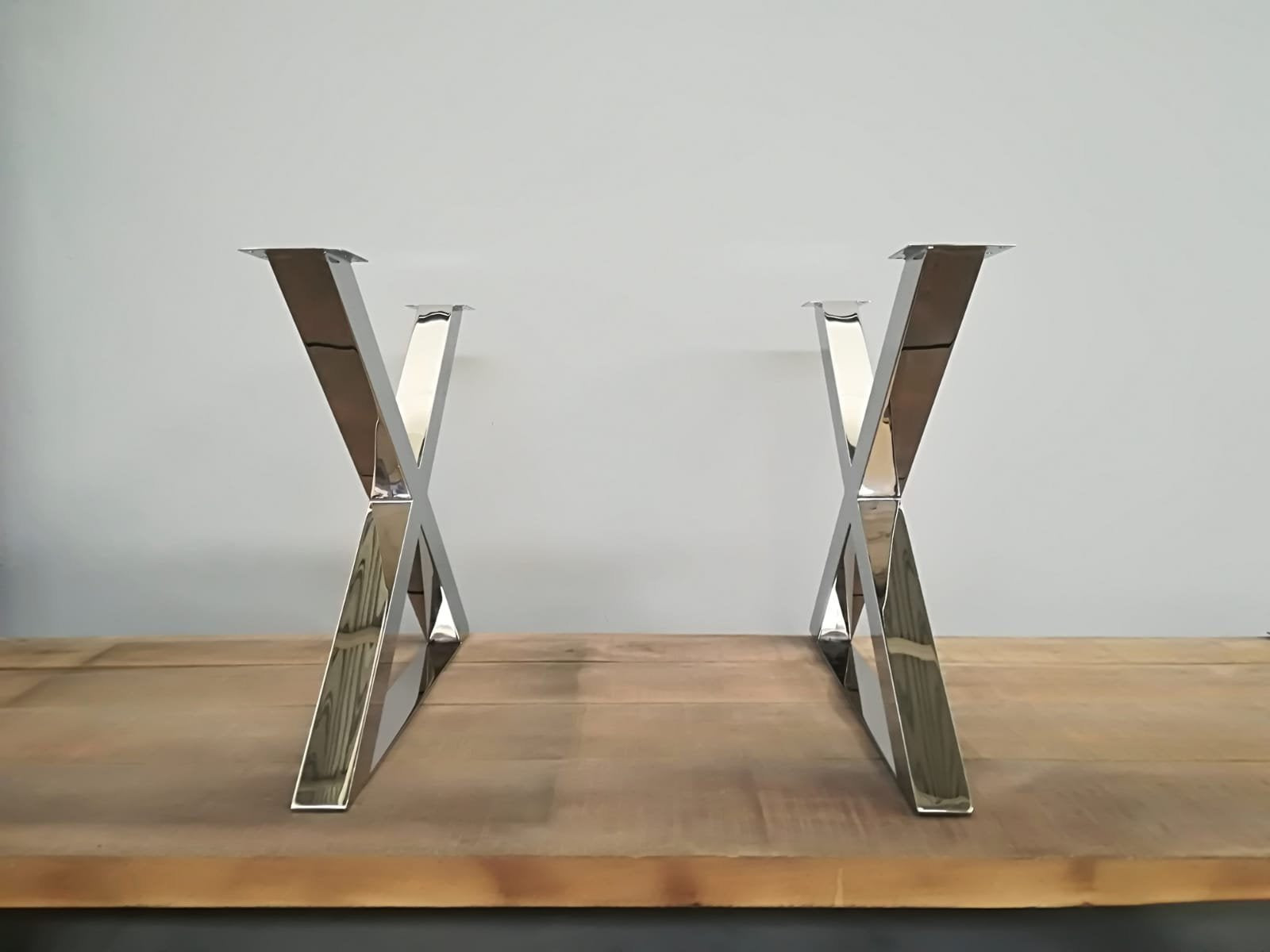How to Choose the Perfect Dining Room Table Legs for Your Home
How to Choose the Perfect Dining Room Table Legs for Your Home
Blog Article
From Traditional to Modern: Locate the Suitable Eating Space Table Legs for Your Style
The selection of dining area table legs plays an essential role in specifying the general personality of your area, bridging the void between typical craftsmanship and modern appearances. While traditional designs such as cabriole and turned legs stimulate a sense of classic class, contemporary designs like barrette and geometric choices offer a chance for striking aesthetic rate of interest. Reviewing the ideal equilibrium between these designs calls for a nuanced understanding of your existing design and personal taste. As you take into consideration these elements, the concern continues to be: just how can you perfectly incorporate these diverse leg styles to produce an unified dining experience?
Recognizing Table Leg Styles
The selection of eating room table leg styles can significantly influence both the aesthetic appeals and capability of the area. Each leg design contributes special functional functions and visual elements, dealing with varied layout choices and use demands. Understanding these styles is crucial for selecting the appropriate eating table that straightens with your general interior decoration vision.
For example, conical legs use a clean, classic appearance that can boost a space's beauty, while pedestal bases give security and make best use of legroom, making them excellent for smaller sized areas. Hairpin legs, a characteristic of mid-century contemporary style, present an industrial flair, permitting for a ventilated, open feel. Trestle legs stimulate rustic appeal, giving robust support and a feeling of timelessness.
Wood legs can bring warmth and appearance, whereas metal choices often communicate a streamlined, contemporary vibe. Inevitably, understanding table leg styles is crucial for creating a cohesive eating location that reflects personal style while making certain practicality and comfort.
Standard Table Leg Options
When picking dining-room table legs, standard alternatives often symbolize ageless sophistication and workmanship. These layouts reflect a rich heritage and a commitment to high quality, making them excellent for those that appreciate classic aesthetic appeals.
One of the most iconic standard leg designs is the cabriole leg, identified by its elegant curved shape. This design typically features ornamental carvings and is most frequently discovered in Queen Anne and Chippendale furnishings. An additional preferred alternative is the transformed leg, which flaunts a collection of smooth, rounded forms that supply a timeless appearance while preserving stability.
Moreover, the straight leg, while basic, uses a strong and unadorned structure that can mix flawlessly with a selection of tabletop designs. For those drawn to ornate detailing, claw-and-ball feet legs evoke a feeling of majesty and can offer as a sensational centerpiece in any dining room.
Last but not least, pedestal bases, although not strictly legs, give a different standard choice that permits enough legroom and can be perfectly carved. Each of these conventional leg designs adds to the overall ambiance of a dining-room, marrying feature with aesthetic allure.

Modern Table Leg Styles
Modern table leg designs use a diverse array of styles that stress tidy lines and innovative products. These layouts typically prioritize performance while acting as striking focal factors within a dining area. Minimal appearances are widespread, with legs crafted from products such as steel, glass, and engineered timber, which add to a airy and modern feeling.
One popular layout is the hairpin leg, defined by its slim, tapered framework that gives stability without frustrating the table top (dining room table legs). This style is commonly found in mid-century contemporary furnishings and can effortlessly match different eating table shapes. One more fad is making use of geometric shapes, where legs may tackle angular or asymmetrical types, including aesthetic interest and a touch of creativity

Mixing Designs for One-of-a-kind Rooms
Commonly, property owners look for to produce special dining areas that reflect their personal design by mixing different design elements. This strategy enables the consolidation of diverse aesthetics, resulting in an unified yet distinct atmosphere. Combining a rustic wooden table with streamlined, contemporary metal legs can create an eye-catching comparison that raises the area's general Source appeal.
Additionally, incorporating vintage table legs with modern tabletops can stimulate a feeling of history while maintaining a modern perceptiveness. Such mixes not just showcase specific taste but likewise encourage imagination, enabling homeowners to curate a room that feels both individual and inviting.
Color plays a crucial duty in this blending procedure; selecting table legs that match or comparison with the existing color plan can improve aesthetic interest. For instance, whitewashed legs can soften the boldness of a dark table surface, creating a balanced visual.
Tips for Choosing the Right Legs
Choosing the right table legs is important for accomplishing both functionality and visual allure in click here for info your dining area. Begin by taking into consideration the overall style of your space. Traditional setups take advantage of legs that feature detailed makings or turned designs, while contemporary areas might require streamlined, minimalist styles.
Next, examine the elevation and stability of the legs. dining room table legs. Conventional eating tables range in between 28 to 30 inches in elevation, so ensure the legs complement this measurement for comfort. Additionally, robust materials, such as hardwood or metal, can improve stability and longevity
Assess the leg form also-- alternatives consist of right, tapered, or stand layouts. Straight legs use a classic look, while tapered legs Extra resources can add a touch of beauty. Pedestal bases supply ample legroom and are perfect for smaller sized rooms.
Verdict
In summary, choosing the optimal dining-room table legs needs careful consideration of both contemporary and conventional styles. Conventional options such as cabriole and turned legs offer classic style, while modern-day layouts like barrette and geometric shapes offer a contemporary touch. By harmonizing leg design, elevation, and material with the overall decoration, a cohesive and welcoming ambience can be attained. Eventually, the chosen table legs should mirror the wanted aesthetic, enhancing the eating experience within the room.
The selection of dining area table leg styles can significantly affect both the appearances and capability of the space. Inevitably, comprehending table leg designs is necessary for creating a natural dining location that reflects personal design while guaranteeing practicality and comfort.One of the most legendary standard leg designs is the cabriole leg, defined by its elegant curved form. Straight legs offer a traditional appearance, while tapered legs can include a touch of elegance.In summary, picking the perfect eating area table legs needs mindful consideration of both modern and standard designs.
Report this page